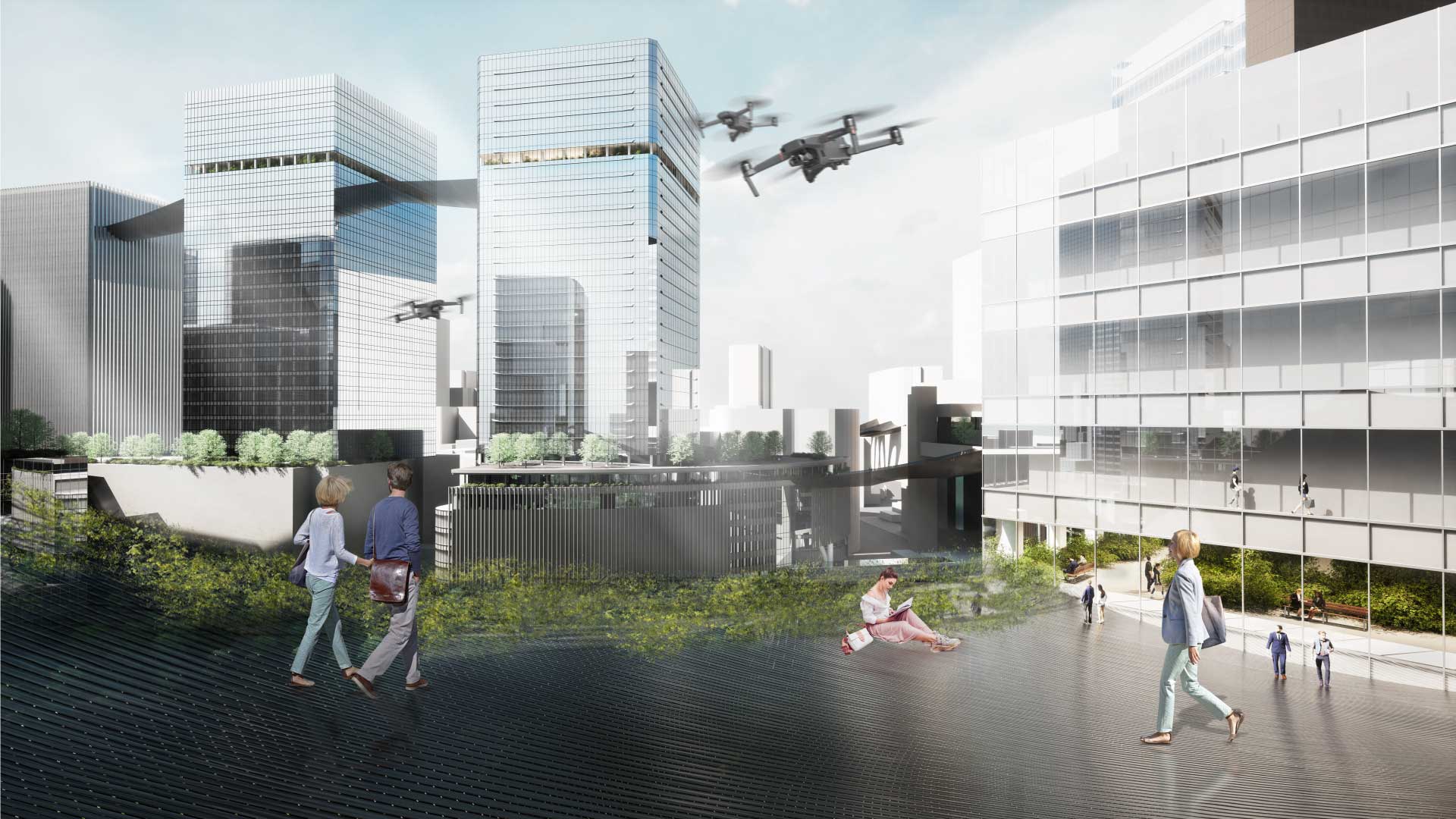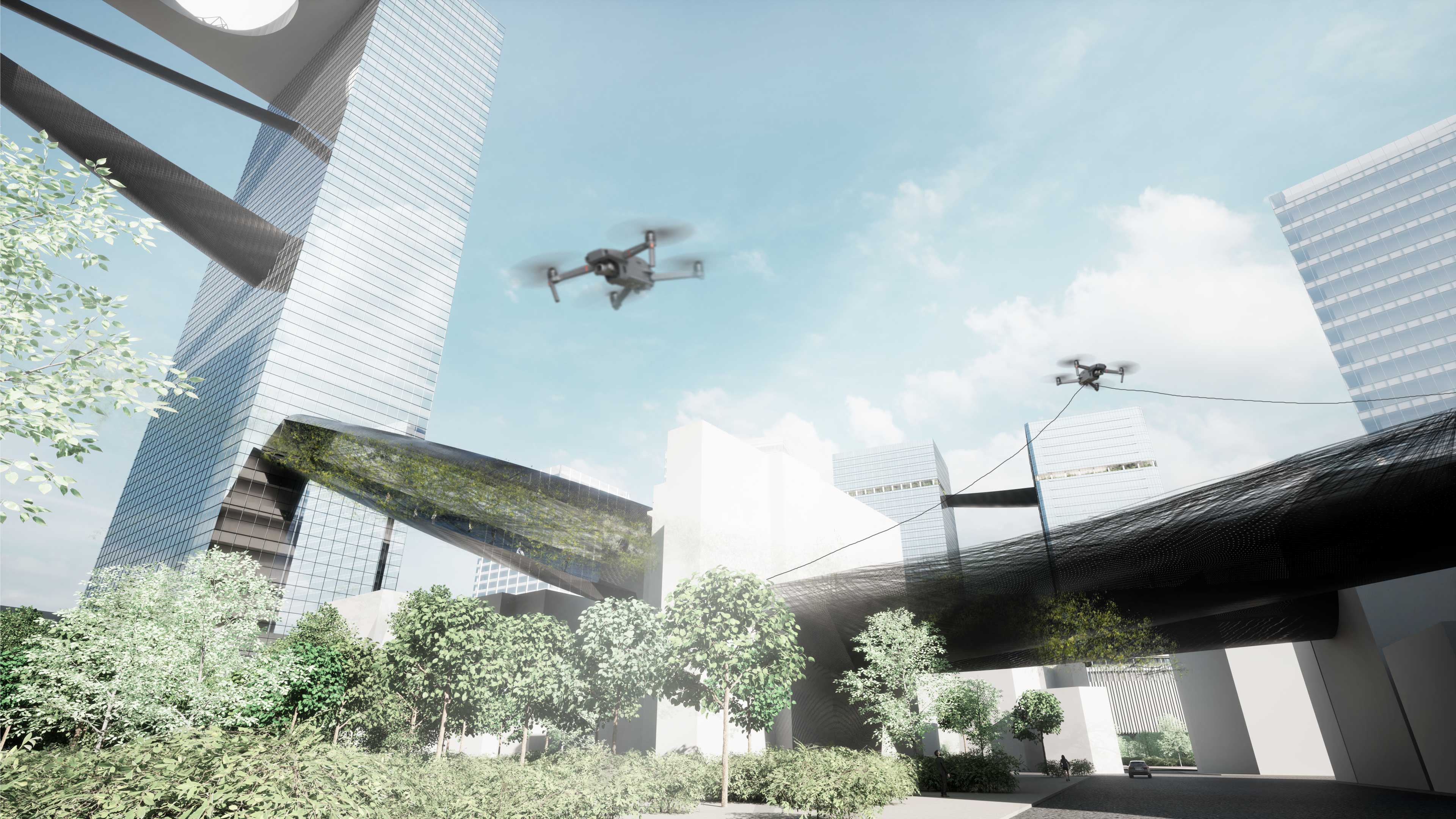Drone Nest

2021
Thesis Project
Type
UrbanPlan
Location
Osaka
Categories
Architecture
Landscape
Archi Informatics
建築におけるドローンの活用は、今や空撮や点検のみに限らず、施工をも変化させつつある。ドローンと繊維を用いることで、足場を必要としない空中での施工を実現させた例がある。本計画では、オフィスビルの空室増加という都市課題に対して、ドローンによる空中建築「Drone Nest」によってビル同士をつなぐことで、梅田スカイビルにおいて原広司氏が試みた「空中都市」を構想する。 Drone NestはGFRPとCFRPの繊維複合材で作られる。繊維配置は生体模倣により決定され、構造解析によって合理的な形態をとる。ドローンによる建設は、この図面表記に縛られない複雑な形態を実現させる。こうしてできるDrone Nestは、ときに空中避難路となり、ときに空中庭園となり、都市の安全性や利便性、公共性を向上させる。そこにある都市風景と体験は、より自然に近づくだろう。
The use of drones in construction is now not limited to aerial photography and inspections, but is also changing construction. In one case, the use of drones and textiles enabled construction in the air without the need for scaffolding. In this project, the "Drone Nest," a drone-based aerial construction, will be used to connect buildings to address the urban issue of increasing office building vacancies, and will be designed to create an "aerial city," as Hiroshi Hara attempted in the Umeda Sky Building. Drone Nest is made of GFRP and CFRP fiber composite. The fiber arrangement is determined by bio-mimicry, and a rational form is taken by structural analysis. Drone construction will allow for complex forms that are not bound by this drawing notation. The resulting Drone Nests sometimes serve as aerial escape routes and sometimes as aerial gardens, improving urban safety, convenience, and public amenity. The urban landscape and experience there will be closer to nature.



